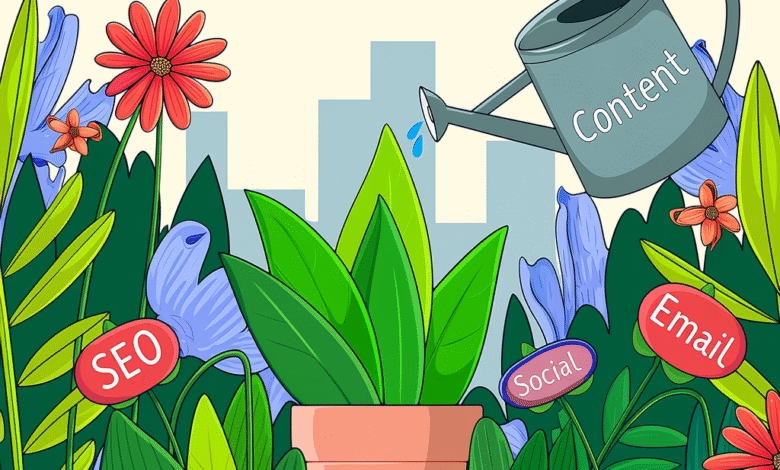
What is Inbound Marketing?
Inbound marketing represents a fundamental shift in the way businesses approach marketing and customer engagement. Unlike traditional marketing methods, which often involve reaching out to consumers directly through advertisements and promotional strategies, inbound marketing focuses on creating valuable content and experiences tailored to them. This approach aims to attract customers through relevant and helpful content and interactions, rather than interruptive tactics.
Definition of Inbound Marketing and its Evolution
Inbound marketing is a strategy that attracts customers by creating valuable content and experiences tailored to their needs and interests. It’s a method that relies on earning a person’s attention, rather than buying it. This concept emerged in the early 2000s as a response to the growing ineffectiveness of traditional, outbound marketing methods. The digital revolution, including the rise of the internet and social media, has significantly fueled its growth, allowing for more direct and personalized communication between businesses and their audiences.
What’s the difference between Inbound and Outbound Marketing
The primary distinction between inbound and outbound marketing lies in their approach to reaching potential customers.
Outbound Marketing uses techniques that are broadly targeted and interruption-based. It includes practices like TV and radio ads, print advertisements, telemarketing, and cold emailing. These techniques seek to push a message out to a wide audience, regardless of whether the audience has expressed interest in the message.
In contrast, Inbound Marketing is about creating and sharing content specifically designed to appeal to your ideal customers, attracting qualified prospects to your business and keeping them coming back for more.
This method relies heavily on:
- Content Creation: Producing blog posts, videos, infographics, and other types of content that provide value to your target audience.
- SEO (Search Engine Optimization): Optimizing content so it appears in search engine results when potential customers are looking for information.
- Social Media Marketing: Using social media platforms to share content and engage directly with the audience.
- Email Marketing: Sending personalized, relevant information directly to interested parties.
The goal of inbound marketing is to form connections with customers and solve problems they already have, rather than trying to create a need for a product or service. This customer-centric approach helps in building trust and credibility for the brand, which is crucial in today’s market where consumers are inundated with information and choices.
As we dive deeper into the subsequent sections, we’ll explore the intricacies of inbound marketing, including its methodology, core components, strategies, and best practices. Understanding these elements is key to effectively leveraging inbound marketing for business growth and customer engagement.
Outline
Click on each of the sections’ headings to expand it:
The Inbound Marketing Methodology
- Four Stages of Inbound Marketing
- Attract, Convert, Close, and Delight
- Buyer Personas
- Understanding and creating buyer personas
- Buyer’s Journey
- Awareness, Consideration, and Decision stages
Core Components of Inbound Marketing
- Content Marketing
- Importance and types of content (blogs, eBooks, whitepapers)
- SEO (Search Engine Optimization)
- Keyword research, on-page SEO, link building
- Social Media Marketing
- Platform-specific strategies, engaging with the audience
- Email Marketing
- Building lists, segmentation, email campaigns
Tools and Technologies
- CRM (Customer Relationship Management)
- Managing leads and customer interactions
- Marketing Automation
- Tools for automating marketing actions
- Analytics and Data Management
- Tracking performance, KPIs, and data-driven decision making
Strategies and Best Practices
- Content Strategy Development
- Research, planning, execution, and management
- Engagement and Community Building
- Building relationships with your audience
- Personalization and User Experience
- Customizing user experience based on interests and behaviors
Challenges and Solutions in Inbound Marketing
- Common Challenges
- Overcoming content saturation, SEO competition, etc.
- Innovative Solutions
- Leveraging new technologies, creative content ideas
Measuring Success and ROI
- KPIs and Metrics
- Key performance indicators for each inbound marketing tactic
- ROI Analysis
- Calculating and optimizing return on investment
Case Studies and Real-World Examples
- Successful Inbound Marketing Campaigns
- Analysis of successful strategies and outcomes
- Lessons Learned
- Insights from failures and successes
The Future of Inbound Marketing
- Emerging Trends
- AI, voice search, interactive content
- Adapting to Changing Consumer Behavior
- How to stay relevant and effective
Conclusion
- Summary of Key Takeaways
- Next Steps for Implementing Inbound Marketing
Each section of this guide should provide in-depth information, practical tips, and actionable strategies to help businesses and marketers effectively implement and benefit from inbound marketing.